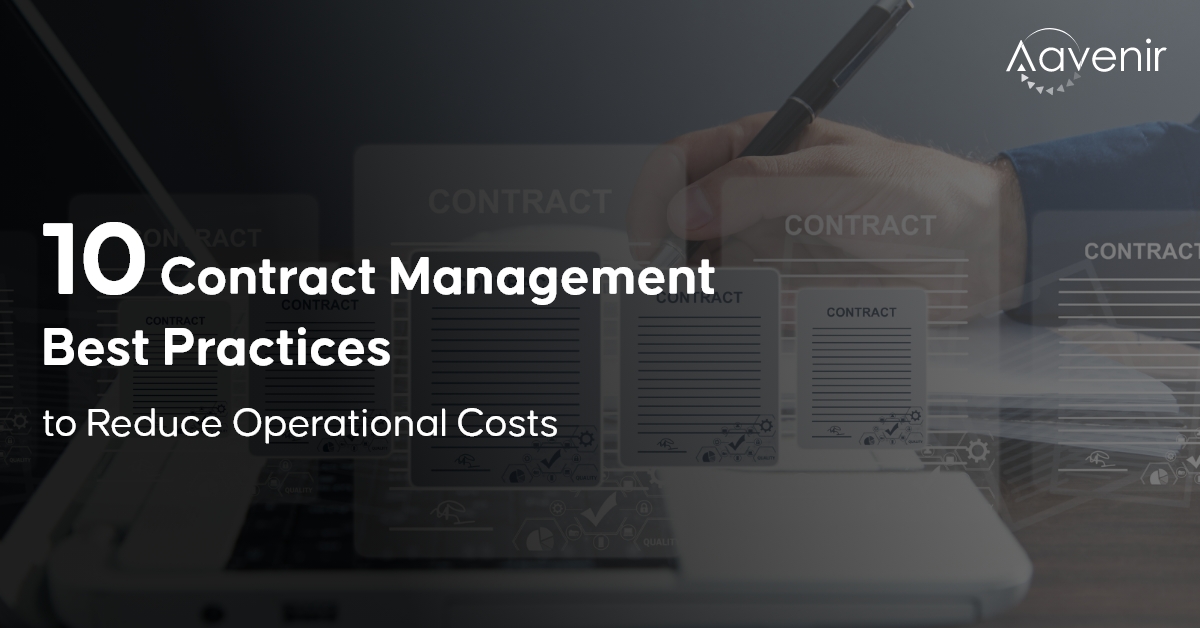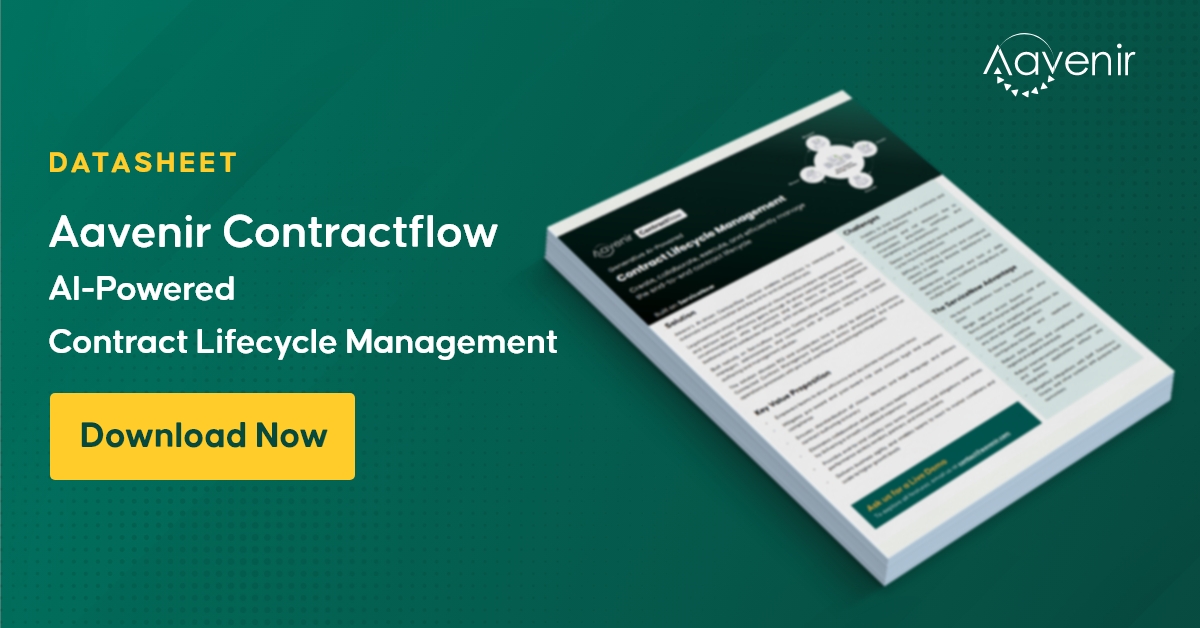Contract management is the systematic process of creating, negotiating, executing, and managing contracts throughout their lifecycle. It's a critical function that ensures businesses are protected, relationships are maintained, and operations run smoothly.
According to McKinsey, companies in aerospace, defense, food manufacturing, and utilities can have 90 percent or more of their annual revenues represented in contracts.
Contract management is often overlooked as a strategic tool for businesses. However, effective contract management can significantly impact a company's bottom line. It plays a pivotal role in ensuring operational efficiency, mitigating risks, and, ultimately, reducing costs. By effectively managing contracts throughout their lifecycle, organizations can identify and eliminate inefficiencies, negotiate favorable terms, and avoid costly disputes.
Optimizing contract terms and ensuring compliance help businesses reduce costs associated with legal disputes and penalties, contract breaches, inefficient processes, missed opportunities, vendor underperformance, and more.
In this blog post, we'll explore contract management best practices that can help you achieve substantial cost savings and optimize your business operations.
10 Contract Management Best Practices
1. Centralized Contract Repository: The Foundation of Effective Management
A centralized contract repository is the cornerstone of efficient contract management. It provides a single, accessible location for storing, organizing, and managing all contracts. By consolidating contracts in one place, businesses can:
- Improve visibility and accessibility: Quickly locate and access contracts when needed, reducing time wasted on searching.
- Enhance collaboration: Facilitate collaboration among teams and stakeholders by providing a shared workspace for contract management.
- Reduce the risk of lost or misplaced contracts: Ensure that contracts are always readily available and protected from loss or damage.
- Streamline contract renewal processes: Easily track contract expiration dates and initiate renewal procedures in a timely manner.
When selecting a contract repository, consider features such as:
- Advanced search capabilities: The ability to search for contracts based on various criteria, including keywords, parties, and contract type.
- Version control: The ability to track changes to contracts over time and access previous versions if needed.
- Workflow automation: The ability to automate routine contract management tasks, such as routing for approval or sending reminders for upcoming renewals.
- Integration with other systems: The ability to integrate with other business systems, such as CRM, ERP, and HR, for a seamless workflow.
2. Automated Contract Lifecycle Management (CLM): Streamlining Processes and Reducing Errors
Automated contract lifecycle management (CLM) tools can significantly streamline contract processes and reduce the risk of errors. By automating tasks such as contract creation, negotiation, execution, and renewal, CLM solutions can:
- Increase efficiency: Reduce manual effort and eliminate bottlenecks in the contract lifecycle.
- Improve accuracy: Minimize the risk of human error and ensure that contracts are accurate and complete.
- Enhance compliance: Ensure that contracts adhere to legal and regulatory requirements.
- Reduce costs: Save time and money by automating routine tasks.
Key features of a CLM solution include contract authoring, negotiation management, e-signature capabilities, and contract analytics.
3. Clear Contract Templates: A Foundation for Efficiency and Consistency
Standardized contract templates are essential for ensuring consistency, efficiency, and compliance. By creating clear and well-structured templates, businesses can reduce negotiation time and streamline the negotiation process by focusing on key terms and conditions. The templates help improve contract quality and ensure that contracts are complete, accurate, and legally sound.
When templates are clear and have a robust structure, businesses can enhance compliance and make sure that contracts adhere to relevant laws and regulations. They save time and money by avoiding the need to create contracts from scratch.
When creating contract templates, consider including the following essential elements:
- Parties: The names and contact information of all parties involved in the contract.
- Purpose: A clear statement of the purpose of the contract.
- Scope of work: A detailed description of the services or goods to be provided.
- Term and termination: The duration of the contract and the conditions under which it can be terminated.
- Payment terms: The terms and conditions for payment.
- Confidentiality: Provisions for protecting confidential information.
- Dispute resolution: A mechanism for resolving disputes that may arise.
4. Thorough Contract Review and Negotiation: Protecting Your Business Interests
Thorough contract review and negotiation are essential for protecting your business's interests and ensuring that you are getting the best possible deal. When reviewing contracts, pay close attention to:
- Key terms and conditions: Ensure that the terms of the contract are favorable to your business.
- Risk allocation: Understand how risks are allocated between the parties.
- Warranties and guarantees: Ensure that the contract includes appropriate warranties and guarantees.
- Indemnification clauses: Understand your obligations and the obligations of the other party in the event of a claim or lawsuit.
During negotiations, be prepared to be willing to negotiate on important terms, such as price, scope of work, or payment terms. Raise any concerns or questions you have about the contract. Be assertive but respectful in your negotiations.
5. Effective Contract Performance Tracking: Monitoring and Managing Your Obligations
Effective contract performance tracking is essential for ensuring that both you and your counterparties are fulfilling your obligations. By monitoring contract performance, you can:
- Identify performance issues: Detect any problems or deviations from the contract terms.
- Take corrective action: Address issues promptly to prevent further problems.
- Ensure compliance: Verify that both parties are adhering to the terms of the contract.
- Optimize contract performance: Identify opportunities for improvement and take steps to optimize contract performance.
Key metrics to track include on-time delivery, quality, compliance, and cost.
6. Regular Contract Audits: A Proactive Approach to Risk Management
Regular contract audits are a proactive approach to risk management. By conducting audits, you can:
- Identify potential risks: Detect any areas of concern or potential risks.
- Ensure compliance: Verify that contracts are compliant with laws and regulations.
- Optimize contract performance: Identify opportunities for improvement.
- Reduce costs: Avoid costly disputes and penalties by addressing issues proactively.
When conducting audits, consider the scope of the audit, audit methodology, audit team, and audit report.
7. Early Identification and Resolution of Contract Disputes: Preventing Costly Litigation
Early identification and resolution of contract disputes can help prevent costly litigation. By addressing issues promptly, you can avoid costly legal fees, maintain positive relationships, and protect your reputation.
Strategies for preventing disputes include:
- Clear and concise contracts: Ensure that contracts are well-written and easy to understand.
- Effective communication: Maintain open and honest communication with your counterparties.
- Dispute resolution clauses: Include dispute resolution clauses in your contracts, such as mediation or arbitration.
8. Vendor Performance Management: Ensuring Quality and Compliance
Effective vendor performance management is essential for ensuring that your vendors are meeting your expectations. By monitoring vendor performance, you can:
- Ensure quality: Verify that goods or services meet the specified quality standards.
- Maintain compliance: Ensure that vendors are adhering to contract terms and regulations.
- Reduce costs: Identify opportunities for cost savings.
- Improve relationships: Foster positive relationships with vendors.
Key metrics to track include on-time delivery, quality, compliance, and cost.
9. Contract Renewal and Termination: A Strategic Approach to Managing Your Contracts
Contract renewal and termination are important strategic decisions. When considering contract renewal, carefully evaluate the following:
- Contract performance: Assess the performance of the contract and whether it meets your needs.
- Market conditions: Consider market trends and whether you can negotiate better terms.
- Cost-benefit analysis: Evaluate the costs and benefits of renewing the contract.
When terminating a contract, ensure that you comply with the terms of the contract and any applicable laws.
10. Continuous Improvement: A Commitment to Excellence
Continuous improvement is essential for maintaining a competitive edge in today's market. By constantly evaluating your contract management processes and identifying areas for improvement, you can:
- Reduce costs: Identify opportunities for cost savings.
- Enhance efficiency: Streamline your contract management processes.
- Improve compliance: Ensure that your contracts are compliant with laws and regulations.
- Build a competitive advantage: Differentiate your business from competitors.
To implement continuous improvement, consider gathering feedback, analyzing data, implementing changes, and measuring results.
By implementing these ten best contract management practices, businesses can significantly reduce operational costs, improve efficiency, and mitigate risks. Effective contract management is a strategic investment that can yield substantial returns.
Consequences of Poor Contract Management
Poor contract management can have far-reaching consequences for a business, both financially and operationally. Failure to properly manage contracts can lead to increased costs, legal disputes, reputational damage, and operational inefficiencies.
One of the most significant consequences of poor contract management is increased costs. When contracts are not properly negotiated or executed, businesses may find themselves paying more than necessary for goods or services. Additionally, disputes arising from poorly managed contracts can result in costly legal battles and lost revenue.
Another consequence of poor contract management is reputational damage. If a business fails to fulfill its contractual obligations, it can damage its reputation and erode customer trust. This can lead to lost business, decreased market share, and difficulty attracting new customers.
Finally, poor contract management can also lead to operational inefficiencies. When contracts are not well-defined or properly managed, it can create confusion and delays in business processes. This can result in decreased productivity, missed deadlines, and a negative impact on overall business performance.
Roadmap to Operational Cost Savings in Contract Management
By implementing the Contract Management Best Practices outlined in this blog post, organizations can significantly reduce operational costs and improve their overall business performance. A well-structured contract management process is essential for ensuring legal compliance, mitigating risks, and optimizing contract performance.
To achieve maximum savings, it is crucial to:
- Prioritize contract management: Make contract management a strategic priority within your organization.
- Invest in technology: Leverage Contract Management Software to automate processes and improve efficiency.
- Train your team: Ensure that your team has the necessary skills and knowledge to effectively manage contracts.
- Continuously improve: Regularly review and refine your contract management processes to identify areas for improvement.
By following these steps, your organization can embark on a journey toward operational savings and long-term success.
Are you ready to take the first step toward optimizing your contract management process? Schedule a demo today to learn more about Aavenir’s AI-powered Contract Lifecycle Management solution.
FAQs
What’s the role of contract management in businesses?
Contract management plays a pivotal role in ensuring operational efficiency, mitigating risks, and, ultimately, reducing costs. By effectively managing contracts throughout their lifecycle, organizations can identify and eliminate inefficiencies, negotiate favorable terms, and avoid costly disputes.
How does automation in CLM streamline processes and reduce errors?
Automated contract lifecycle management (CLM) tools can significantly streamline contract processes and reduce the risk of errors. By automating tasks such as contract creation, negotiation, execution, and renewal, CLM solutions can increase efficiency, improve accuracy, enhance compliance, and reduce costs.
What are the consequences of poor contract management?
Poor contract management can have far-reaching consequences for a business, both financially and operationally. Failure to properly manage contracts can lead to increased costs, legal disputes, reputational damage, and operational inefficiencies.
What’s the significance of contract management best practices?
By implementing contract management best practices, organizations can significantly reduce operational costs and improve their overall business performance. A well-structured contract management process is essential for ensuring legal compliance, mitigating risks, and optimizing contract performance.



